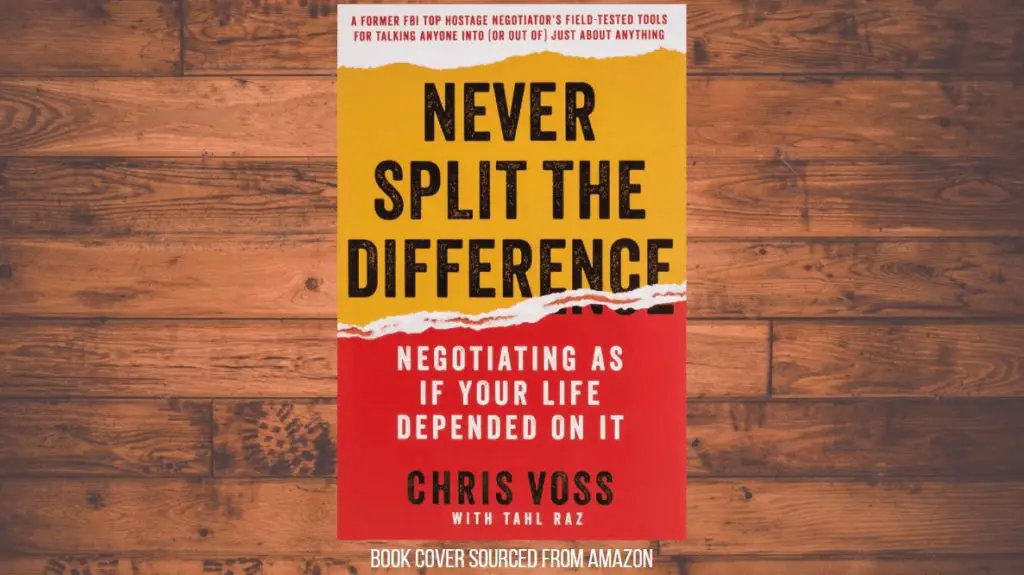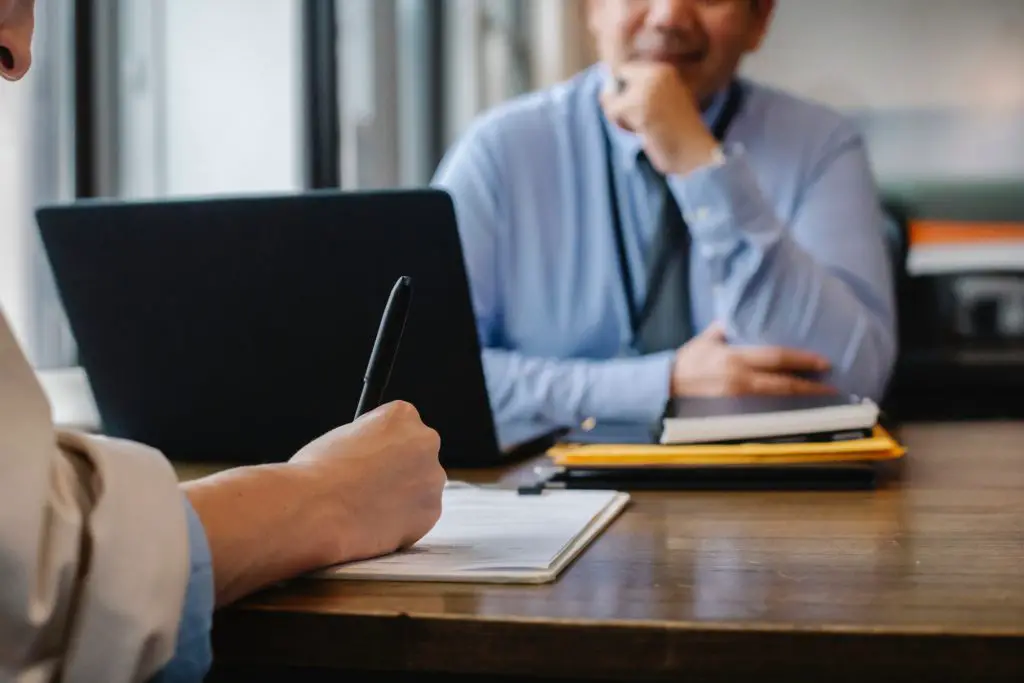1. We have two systems of thought: System 1, our animal mind, is fast, instinctive, and emotional; System 2 is slow, deliberative, and logical. System 1 is more influential.
2. If emotionally driven incidents, not rational bargaining interactions, constituted the bulk of what most police negotiators had to deal with, then our negotiating skills had to laser-focus on the animal, emotional, and irrational.
3. What was needed were simple psychological tactics and strategies that worked in the field to calm people down, establish rapport, gain trust, elicit the verbalization of needs, and persuade the other guy of our empathy. It all starts with the universally applicable premise that people want to be understood and accepted.
4. Negotiation serves two distinct, vital life functions—information gathering and behavior influencing—and includes almost any interaction where each party wants something from the other side. Negotiation is nothing more than communication with results.
5. Effective negotiation is applied people smarts, a psychological edge in every domain of life: how to size someone up, how to influence their sizing up of you, and how to use that knowledge to get what you want.
6. Good negotiators, going in, know they have to be ready for possible surprises; great negotiators aim to use their skills to reveal the surprises they are certain exist. Present and alert in the moment, they use all the new information that comes their way to test and winnow true hypotheses from false ones. You should engage the process with a mindset of discovery.
7. Most people approach a negotiation so preoccupied by the arguments that support their position that they are unable to listen attentively. When they’re not talking, they’re thinking about their arguments, and when they are talking, they’re making their arguments.
8. The goal is to identify what your counterparts actually need (monetarily, emotionally, or otherwise) and get them feeling safe enough to talk about what they want.
9. Going too fast is one of the mistakes all negotiators are prone to making. If we’re too much in a hurry, people can feel as if they’re not being heard and we risk undermining the rapport and trust we’ve built. There’s plenty of research that now validates the passage of time as one of the most important tools for a negotiator.
10. When deliberating on a negotiating strategy or approach, people tend to focus all their energies on what to say or do, but it’s how we are (our general demeanor and delivery) that is both the easiest thing to enact and the most immediately effective mode of influence.
11. Your most powerful tool in any verbal communication is your voice. There are essentially three voice tones available to negotiators: the late-night FM DJ voice, the positive/playful voice, and the direct or assertive voice.
12. When people are in a positive frame of mind, they think more quickly, and are more likely to collaborate and problem-solve (instead of fight and resist).
13. Mirroring, also called isopraxism, is essentially imitation. It’s a phenomenon (and now technique) that follows a very basic but profound biological principle: We fear what’s different and are drawn to what’s similar.
14. Tactical empathy is understanding the feelings and mindset of another in the moment and also hearing what is behind those feelings so you increase your influence in all the moments that follow. It’s emotional intelligence on steroids.
15. Labeling is a way of validating someone’s emotion by acknowledging it. Labeling has a special advantage when your counterpart is tense. Exposing negative thoughts to daylight—“It looks like you don’t want to go back to jail”—makes them seem less frightening.
16. In basic terms, people’s emotions have two levels: the “presenting” behavior is the part above the surface you can see and hear; beneath, the “underlying” feeling is what motivates the behavior. What good negotiators do when labeling is address those underlying emotions.
17. The reasons why a counterpart will not make an agreement with you are often more powerful than why they will make a deal, so focus first on clearing the barriers to agreement.
18. “No” is the start of the negotiation, not the end of it. Saying “No” makes the speaker feel safe, secure, and in control, so trigger it. By saying what they don’t want, your counterpart defines their space and gains the confidence and comfort to listen to you.
19. There are actually three kinds of “Yes”: Counterfeit, Confirmation, and Commitment.
20. CNU developed what is a powerful staple in the high-stakes world of crisis negotiation, the Behavioral Change Stairway Model (BCSM). The model proposes five stages—active listening, empathy, rapport, influence, and behavioral change—that take any negotiator from listening to influencing behavior.
21. Trigger a “That’s right!” with a summary. A good summary is the combination of rearticulating the meaning of what is said plus the acknowledgment of the emotions underlying that meaning (paraphrasing + labeling = summary). “That’s right” is better than “yes.” Strive for it. Reaching “that’s right” in a negotiation creates breakthroughs.
22. The traditional negotiating logic that’s drilled into us from an early age, the kind that exalts compromises, says, “Let’s just split the difference and offer them $75,000. Then everyone’s happy.” No. Just, simply, no. The win-win mindset pushed by so many negotiation experts is usually ineffective and often disastrous. At best, it satisfies neither side.
23. You can bend your counterpart’s reality by anchoring his starting point. When you get to numbers, set an extreme anchor to make your “real” offer seem reasonable, or use a range to seem less aggressive. The real value of anything depends on what vantage point you’re looking at it from.
24. Time is one of the most crucial variables in any negotiation. The simple passing of time and its sharper cousin, the deadline, are the screw that pressures every deal to a conclusion. Whether your deadline is real and absolute or merely a line in the sand, it can trick you into believing that doing a deal now is more important than getting a good deal.
25. Going first is not necessarily the best thing when it comes to negotiating price. That’s why I suggest you let the other side anchor monetary negotiations. By letting them anchor you also might get lucky: I’ve experienced many negotiations when the other party’s first offer was higher than the closing figure I had in mind. The tendency to be anchored by extreme numbers is a psychological quirk known as the “anchor and adjustment” effect.
26. Establish a range. Instead of saying, “I’m worth $110,000,” Jerry might have said, “At top places like X Corp., people in this job get between $130,000 and $170,000.” Many even go directly to their price limit. Understand, if you offer a range (and it’s a good idea to do so) expect them to come in at the low end.
27. When you do talk numbers, use odd ones. In terms of negotiation, some numbers appear more immovable than others. The biggest thing to remember is that numbers that end in 0 inevitably feel like temporary placeholders, guesstimates that you can easily be negotiated off of. But anything you throw out that sounds less rounded—say, $37,263—feels like a figure that you came to as a result of thoughtful calculation. Such numbers feel serious and permanent to your counterpart, so use them to fortify your offers.
28. Create the illusion of control. The secret to gaining the upper hand in a negotiation is giving the other side the illusion of control.
29. Bite your tongue. When you’re attacked in a negotiation, pause and avoid angry emotional reactions. Instead, ask your counterpart a calibrated question.
30. You have to beware of “behind the table” or “Level II” players—that is, parties that are not directly involved but who can help implement agreements they like and block ones they don’t.
31. Truly effective negotiators are conscious of the verbal, paraverbal (how it’s said), and nonverbal communications that pervade negotiations and group dynamics.
32. The 7-38-55 percent rule. That is, only 7 percent of a message is based on the words while 38 percent comes from the tone of voice and 55 percent from the speaker’s body language and face.
33. The Pinocchio Effect. On average, liars use more words than truth tellers and use far more third-person pronouns. They start talking about him, her, it, one, they, and their rather than I, in order to put some distance between themselves and the lie. And they discovered that liars tend to speak in more complex sentences in an attempt to win over their suspicious counterparts.
34. The Ackerman model is an offer-counteroffer method, at least on the surface. 1. Set your target price (your goal). 2. Set your first offer at 65 percent of your target price. 3. Calculate three raises of decreasing increments (to 85, 95, and 100 percent). When calculating the final amount, use precise, nonround numbers like, say, $37,893 rather than $38,000. It gives the number credibility and weight. On your final number, throw in a nonmonetary item (that they probably don’t want) to show you’re at your limit.
35. Observe unguarded moments. While you have to get face time, formal business meetings, structured encounters, and planned negotiating sessions are often the least revealing kinds of face time because these are the moments when people are at their most guarded. During a typical business meeting, the first few minutes, before you actually get down to business, and the last few moments, as everyone is leaving, often tell you more about the other side than anything in between. Also pay close attention to your counterpart during interruptions, odd exchanges, or anything that interrupts the flow.




